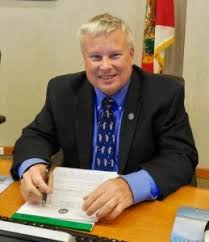By Dale Martin
City Manager
Fernandina Beach
July 2, 2021

In last week’s article, using my 2020 Truth in Millage (TRIM) Notice, I illustrated what is referred to as the “rollback rate” for local property taxes. This can be found in “Column 2” of the TRIM Notice. Your 2020 TRIM Notice can be found on the Nassau County Property Appraiser’s website through the GIS Tax Map link if you want to review your tax property tax information from last year. TRIM Notices for 2021 taxes will be available in August.
The rollback rate is calculated by the Property Appraiser and it is predicated upon tax revenues generated the prior year and property value increases in the current year on, in general, the same universe of properties. Once the rollback rate is determined, the revenues generated by new properties and improvements is considered “new revenue” for the taxing authority.
Any millage levied above the rollback rate is, by Florida statues, defined as a tax increase. As part of the budget process, the City is required, in a specified format, to announce that the proposed budget will include a tax increase if the budget is based upon a millage rate above the rollback rate.
What is often confusing is that although taxes may increase on properties, the increase on individual properties is typically not to the degree that is the increase above the rollback rate. The published increase over the rollback rate is an increase in total tax revenues to the taxing authorities, not to individual parcels.
Again using my property as an example and a 2021 budget based upon the same millage rate as the 2020 budget. The millage rate levied in 2020 by the City of Fernandina Beach was 5.4683. The rollback rate for 2021 is 5.1068 mills. If the millage rate for 2021 remains at 5.4683, the City would announce a tax increase of approximately 7.1%.
On my property, based upon a projected 2021 Taxable Value of $263,413 (on 2020 TRIM Notice, 2020 Assessed Value multiplied by the 1.4% Save Our Homes cap and then minus the $50,000 Homestead exemptions), an unchanged millage rate of 5.4683 would result in my City taxes for 2021 being $1,440, an increase of $24, or 1.7%, over my 2020 City property taxes. This increase, an increase nonetheless, is significantly less than the increase in total tax revenues to which the rollback rate refers.
For a further comparison of the relationship of individual increased property taxes to the tax revenue increase related to the rollback rate, I examined my property taxes for the past four years. For reference, I couldn’t go back five years to when I purchased my property since in 2016 I made improvements to the property so the comparison would not be consistent.
I am about to further overwhelm you with more numbers, but I appreciate your patience. I believe this concept is critical to understand the tax increases associated with the City budget on both a large scale perspective as well as an individual perspective (for those properties that receive the Homestead exemptions).
In 2017/2018, the rollback rate was 5.4951; the millage levy was 6.0000 (a tax revenue increase of 9.2%. In 2018/2019, rollback, 5.2459; millage levy, 5.8553 (+ 10.4%). In 2019/2020, rollback, 4.8048; millage levy, 6.3553 (this was the year of the half-mill conservation levy; + 32.2%). In 2020/2021, rollback, 5.2977; millage levy, 5.4683 (+ 3.2%). Based upon the cumulative increases, total tax revenues to the City increased by 55%.
How did that tax increase of 55% affect my individual property taxes? In 2017, my City property taxes were $1,469 (not including the voter approved debt service of $51.35). In 2020, my City property taxes were $1,416: a decrease of $53 or 3.6%, significantly different than the tax increase announced in relationship to the rollback rate. The substantial increase in property tax revenues is due to the continuing explosive growth of property values, not the millage rate.
A review of the entirety of the 2019 tax rolls (the most recent figures available from the Nassau County Tax Collector), reveals that the approximate median City tax bill of the roughly 10,000 parcels in the City was $1,200. The taxes on individual properties ranged from roughly $15 to nearly $250,000. That overwhelming disparity simply confirms that property taxes are inherently unequal, but it is the system utilized by the State of Florida for all municipalities.
And as can be seen in my property taxes, which are higher than the median taxes, the highest burden of property taxes is borne by new property owners. My neighbor across the street, who came to this community a few years after I did and built a new house, pays roughly 50% more than me in City property taxes for the same services and programs.
The fact is that will never change: the $2,200 tax bill will never be reduced to the amount of the $1,200 tax bill, nor, due to the Save Our Homes provisions, will the $1,200 tax bill increase to the level of the $2,200 bill. That is how local governments and other taxing authorities are financed.
I encourage you to review your TRIM Notices and tax bills to see how your taxes have changed over the past several years. Often, the individual bottom line is more indicative than any other percentages or statistics.
If you have any questions, please contact me.
